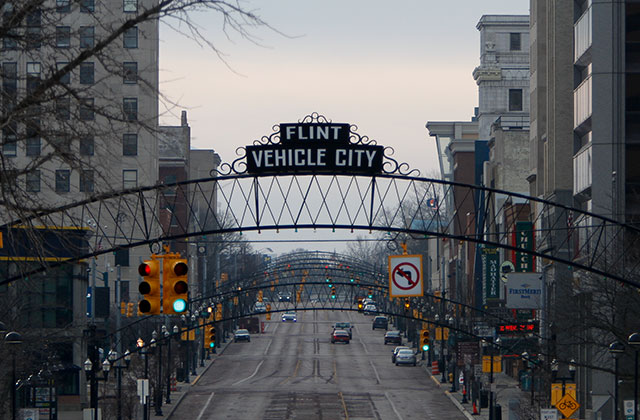More than two years have passed since the water crisis in Flint, Michigan hit the national headlines. But the water crisis itself unfolded over three years ago in 2014—not 2015 when the rest of the country found out about it. Residents began complaining in April 2014; they knew something was wrong with their water, though it took some time until they knew it was lead.
National media began covering the issue quite late, argues a paper published today (July 11) by the Harvard University’s Shorenstein Center on Media, Politics and Public Policy. Local media such as M-Live/The Flint Journal covered it consistently from the beginning, but the same isn’t true for nationally lauded publications. The paper goes as far as to criticize The New York Times’ “parachuting into the crisis.”
The analysis poses the question: Would the situation have turned out differently if national media intervened sooner?
It specifically states:
Sustained and widespread media attention was not given until late 2015 and early 2016, when the state of Michigan and President [Barack] Obama declared an emergency over high levels of lead in the water and in the blood of thousands of children. Additionally, the nature of some of the coverage was problematic: Complaints of citizens were discounted when compared to the comments of officials, residents were portrayed as hopeless and downtrodden despite months of action, and narratives of “heroes” excluded African American activists in a city that is 57 percent black.
Here, three major points the paper makes on the media, its role in the water crisis that poisoned Flint residents—and on environmental justice, as a whole.
National media trusted officials over residents.
In Flint, the conflict started out as a he-said, she-said debate. Residents complained their water was contaminated, that it smelled and looked odd. Government officials, on the other hand, stood firm that the water was safe.
In July 2015, before either the state or federal government declared the situation a state of emergency, the city issued a water quality update to residents. The water system had violated the Safe Drinking Water Act for excess amounts of trihalomethanes, a dangerous compound that could lead to liver and kidney disease, yet the city still tried to reassure residents everything was OK: “This is not an emergency. If it had been an emergency, you would have been notified within 24 hours.”
As the Shorenstein Center notes, the media didn’t question official statements. They chose to believe them over the residents and only gave the crisis substantial coverage when it was confirmed by “credentialed” doctors and scientists: “When everyday citizens ring the alarm bell on issues, like water and air pollution, the national media must start from the assumption that locals know what they’re talking about,” the analysis puts frankly.
Poor media diversity contributed to this coverage.
Just 17 percent of newspaper staffs nationwide are Black, Asian, Native American or Latinx, according to a 2016 survey. What does that lead to, according to the Harvard paper? Misrepresentation in the media: Black and Latinx people as criminals and White people as “good-hearted, innocent citizens,” as the paper puts it.
Environmental reporters aren’t abundant at news organizations either—and especially not those who cover environmental justice specifically, as the paper states. This contributes to a lack of context in reports on the topic.
Per the Shorenstein Center:
Negative stereotypes can have a dehumanizing effect, lulling the media to sleep. Flint was a perfect storm for that to happen, often depicted as a broke and broken city as a result of the staggering loss of manufacturing jobs in the last half of the 20th century.
Media apologies are not enough.
Journalist after journalist, TV personality after TV personality and broadcaster after broadcaster apologized for their delayed response to the Flint water crisis. There was CNN host Jake Tapper and a National Journal columnist who wrote about Michigan Gov. Rick Snyder without mentioning the water problem. Not only that, the paper argues, but this delay led publications to inaccurately capture the moment. Non-local journalists missed the opportunity to cover a movement that showed a poor Black community rising up in ways it never had before—an uplifting angle to a rather grim story.
As noted in the text:
Newspapers and networks missed the many months of people showing up at city hall and meetings to complain about the water and the rashes and illnesses, or the eagerness to participate in the citizen testing organized by Virginia Tech and others. In a city 57 percent African-American, 37 percent white, and 40 percent poor, the media missed a story of citizen action that cut across racial and class lines to complain about, and campaign against, the use of Flint River water.
The media’s role as a “cop” to enforce environmental justice is more important now than ever, the paper argues, as the country enters a period where climate change and environmental justice have taken a backseat under the Trump administration.
“There is not much hope for the environmental security of all Americans if the media does not respond to emergencies in a nondiscriminatory way. The media are not yet up for the task.”
